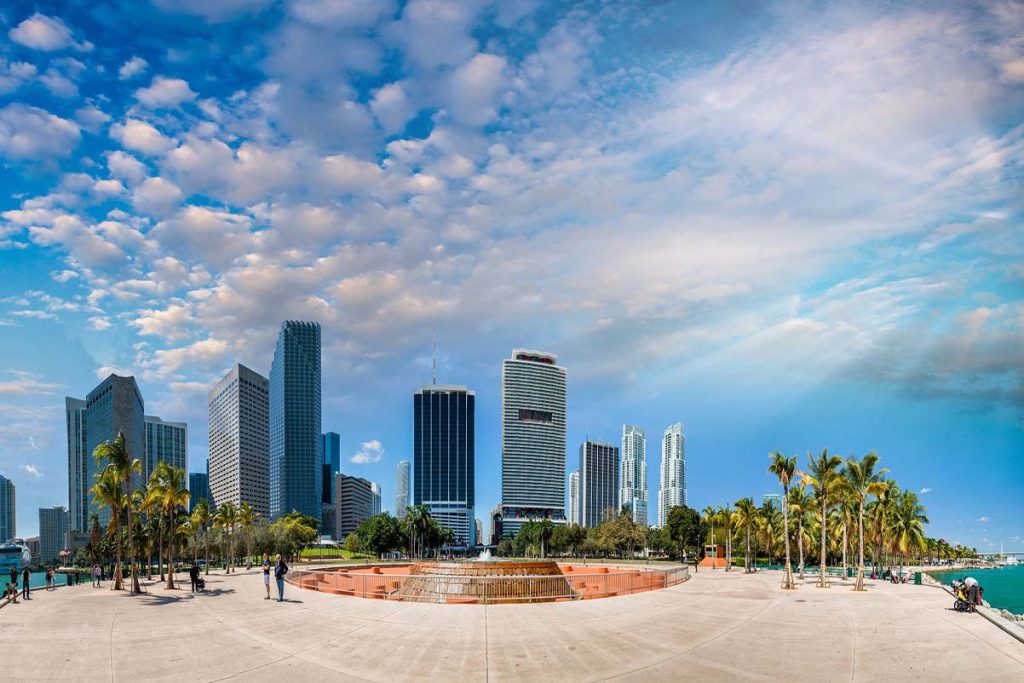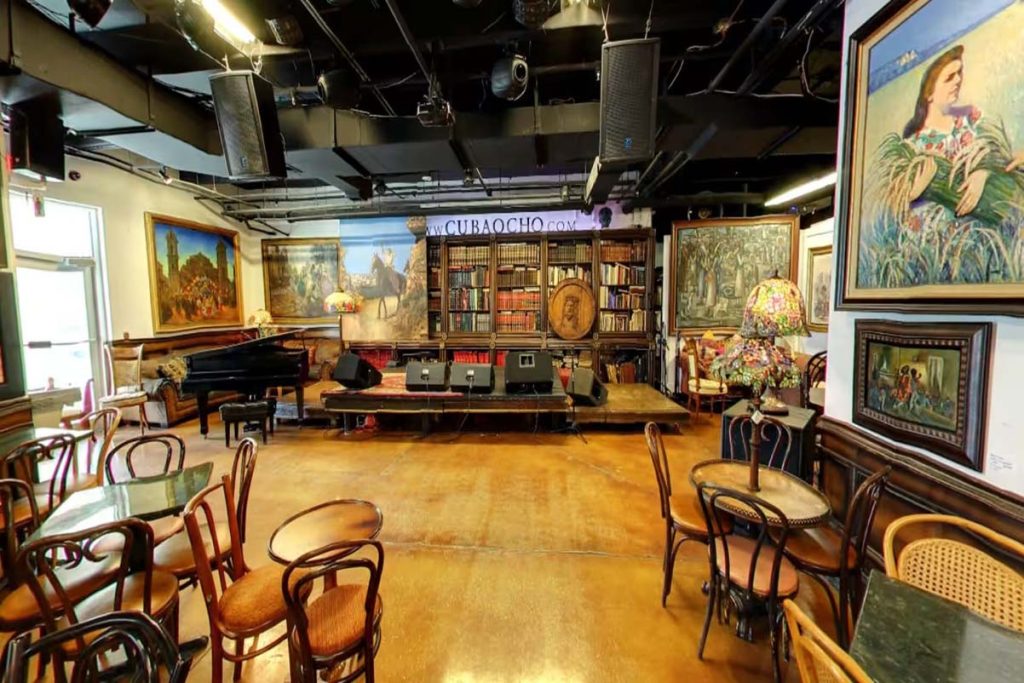Miami has always held a certain allure for me. The city’s vibrant blend of cultures, its iconic beaches, and the palpable energy of its streets are something I’ve long been drawn to. When I finally had the opportunity to visit, I knew I wanted to make the most of my time there. Whether you’re planning a quick weekend getaway or an extended vacation, Miami offers something for everyone. In this guide, I’ll walk you through everything you need to know—from navigating the city’s transportation options to indulging in its diverse culinary scene.
Getting Around Miami: Transportation Tips
Navigating Miami might seem daunting at first, especially with its sprawling neighborhoods and busy streets, but the city offers a variety of transportation options that make getting around easier than expected.
1. Renting a Car: Freedom on Four Wheels
For those planning to explore beyond Miami Beach and downtown, renting a car is a great option. The city is spread out, and having a car gives you the freedom to visit more remote areas like Key Biscayne, Coral Gables, and even take a day trip down to the Florida Keys.
I rented a car for my trip, which allowed me to explore Miami at my own pace. The process was straightforward, with multiple rental companies available at Miami International Airport (MIA). I booked my car in advance through Rentalcars.com, which offered competitive rates and a wide selection of vehicles. Having a car was particularly useful for reaching places that aren’t easily accessible by public transport.
However, it’s important to keep in mind that parking in Miami can be challenging and expensive, especially in popular areas like South Beach. I found it helpful to use parking apps like ParkMobile, which allowed me to find and pay for parking spaces directly from my phone.
2. Public Transportation: An Affordable Option
Miami’s public transportation system is more efficient than you might expect. The city offers a variety of options, including buses, the Metrorail, and the Metromover.
- Metrorail: The Metrorail is a 25-mile elevated train system that runs through Miami-Dade County. It’s an excellent option if you’re staying in areas like Downtown, Brickell, or Coconut Grove. I found it convenient for getting to places like the Vizcaya Museum and Gardens and the University of Miami. The Metrorail also connects to the airport, making it a budget-friendly option for getting into the city.
- Metromover: The Metromover is a free, automated people mover system that operates in Downtown Miami and Brickell. It’s perfect for short trips within these areas, and I used it frequently to explore downtown without worrying about traffic or parking.
- Buses: Miami’s bus system is extensive and covers most of the city, including Miami Beach. While buses can be slower due to traffic, they’re a good option for reaching destinations not covered by the Metrorail or Metromover.
If you plan on using public transportation frequently, consider purchasing an EASY Card, which can be loaded with cash value and used across all public transit systems. The card can be purchased and reloaded at Metrorail stations and select retailers.
3. Ride-Sharing Services: Convenient and Accessible
For those times when public transportation wasn’t convenient or when I wanted to avoid the hassle of parking, I relied on ride-sharing services like Uber and Lyft. These services are widely available in Miami and are often the best option for short trips, especially late at night or when traveling to areas not well-served by public transport.
One thing I appreciated about using Uber in Miami was the ability to request a ride directly to specific locations, like popular restaurants or attractions, without worrying about parking. I also found that Uber and Lyft were relatively affordable for short trips within central Miami.
4. Biking and Scootering: Fun and Eco-Friendly
For shorter distances, especially around South Beach and Wynwood, biking and scootering are fantastic options. Miami has invested in bike lanes and shared-use paths, making it easier and safer to bike around the city.
I rented a bike from Citi Bike, a bike-sharing service with stations throughout Miami and Miami Beach. It was a fun way to explore the Art Deco Historic District and take in the ocean views along the South Beach Boardwalk. If biking isn’t your style, electric scooters are also available from companies like Lime and Bird. These scooters are easy to use and can be rented through their respective apps.
Where to Stay: Accommodations in Miami
Miami offers a wide range of accommodations, from luxury hotels to budget-friendly hostels. Where you stay can greatly influence your experience, so it’s important to choose a location that aligns with your travel goals.
1. South Beach: Iconic and Lively
South Beach is arguably Miami’s most famous neighborhood, known for its vibrant nightlife, beautiful beaches, and iconic Art Deco architecture. If you want to be in the heart of the action, South Beach is the place to stay.
I opted for a stay at The Betsy Hotel, a boutique hotel that perfectly captures the Art Deco spirit of Miami. Located right on Ocean Drive, The Betsy offers stunning views of the Atlantic Ocean, a rooftop pool, and a serene courtyard that provides a quiet retreat from the lively streets outside. For those looking for a more budget-friendly option, hostels like Generator Miami offer a trendy, social atmosphere at a fraction of the cost of traditional hotels.
2. Downtown and Brickell: Urban and Chic
If you prefer a more urban setting, consider staying in Downtown Miami or Brickell. These areas are known for their sleek skyscrapers, upscale restaurants, and proximity to major attractions like the Pérez Art Museum and Bayfront Park.

I spent a few nights at the EAST Miami in Brickell, a modern hotel with stunning views of the city skyline. The hotel’s rooftop bar, Sugar, quickly became one of my favorite spots for evening cocktails, offering panoramic views of Miami.
3. Coconut Grove: Bohemian and Relaxed
For a more laid-back experience, Coconut Grove is a great option. This charming neighborhood offers a bohemian vibe, with tree-lined streets, outdoor cafes, and a relaxed atmosphere that’s perfect for those looking to escape the hustle and bustle.
During my stay in Coconut Grove, I enjoyed the slower pace and spent time exploring local boutiques, dining at outdoor restaurants, and relaxing in the lush Peacock Park. The Mayfair at Coconut Grove, with its unique architecture and spacious rooms, provided a comfortable and peaceful base for exploring the area.
Dining in Miami: A Culinary Journey
Miami’s culinary scene is as diverse as its population, offering everything from fresh seafood to authentic Cuban cuisine. As a food lover, I made it a point to explore as many dining options as possible during my stay, and I wasn’t disappointed.
1. Iconic Cuban Cuisine
No trip to Miami is complete without indulging in some authentic Cuban food. One of my favorite spots was Versailles, located in Little Havana. Known as the “World’s Most Famous Cuban Restaurant,” Versailles has been serving up classic Cuban dishes for over 50 years. I ordered the Ropa Vieja (shredded beef) with a side of maduros (sweet plantains), and it was everything I had hoped for—flavorful, comforting, and authentic.
For a more casual experience, I also visited El Palacio de los Jugos, a local chain known for its fresh fruit juices and traditional Cuban fare. The lechón asado (roast pork) was a standout, and the lively atmosphere made it a fun place to eat.
2. Fresh Seafood
Given its coastal location, it’s no surprise that Miami boasts some of the freshest seafood around. I had a memorable dinner at Joe’s Stone Crab, a Miami institution since 1913. Known for its stone crab claws, which are in season from October to May, Joe’s is the place to go for a quintessential Miami dining experience. The service was impeccable, and the crab claws, served with mustard sauce, were simply divine.
For a more casual seafood experience, I headed to Garcia’s Seafood Grille & Fish Market on the Miami River. This family-owned spot offers fresh, locally caught seafood in a laid-back setting. I enjoyed the grilled mahi-mahi and a side of conch fritters, all while taking in the views of the river.
3. Trendy Eateries and Fusion Cuisine
Miami’s dining scene is constantly evolving, with new restaurants popping up that offer innovative takes on traditional dishes. One of the highlights of my trip was dining at KYU in Wynwood, a trendy restaurant known for its Asian-inspired wood-fired cuisine. The wagyu beef brisket and thai fried rice stone pot were standout dishes, packed with flavor and beautifully presented.
Another must-visit is Mandolin Aegean Bistro in the Design District. This charming restaurant offers a taste of the Mediterranean with dishes like grilled octopus and lamb kebabs. The outdoor garden seating adds to the experience, making it a perfect spot for a leisurely lunch.
To make reservations at these popular restaurants, I used platforms like OpenTable and Resy, which made it easy to secure a table in advance, especially during peak dining hours.
Exploring Miami: Must-See Attractions
Miami is more than just beaches and nightlife. The city is rich in culture, art, and history, offering a wide range of attractions to explore.
1. Art Deco Historic District
One of my first stops in Miami was the Art Deco Historic District in South Beach. This area is home to over 800 preserved buildings from
the 1920s and 1930s, showcasing the city’s unique architectural heritage. I joined a walking tour organized by the Miami Design Preservation League, which provided fascinating insights into the history and design of these iconic buildings.
2. Wynwood Walls
Wynwood is Miami’s artsy neighborhood, known for its colorful murals and vibrant street art. The Wynwood Walls, an outdoor museum of street art, is a must-visit. I spent hours wandering through the murals, each one more impressive than the last. The area is also home to numerous galleries, boutiques, and cafes, making it a great place to spend an afternoon.
3. Vizcaya Museum and Gardens
For a taste of Miami’s history, I visited the Vizcaya Museum and Gardens. This Italian Renaissance-style villa, built in the early 20th century, offers a glimpse into Miami’s past. The mansion is filled with European antiques, and the surrounding gardens are beautifully landscaped, providing a peaceful escape from the city.
4. Little Havana

Little Havana is the cultural heart of Miami’s Cuban community. Walking along Calle Ocho, I felt as though I had stepped into another world, with the sounds of salsa music filling the air and the smell of Cuban coffee wafting from local cafes. I visited the Cubaocho Museum & Performing Arts Center, where I enjoyed live music and learned about the history of Cuban art and culture.
Miami is a city that has something for everyone. Whether you’re a beach lover, a foodie, or a culture enthusiast, you’ll find plenty to see and do. My time in Miami was filled with unforgettable experiences, from dining on fresh seafood to exploring vibrant neighborhoods and relaxing on the beach.
One of the things I loved most about Miami was the diversity of its neighborhoods, each offering a unique vibe and experience. Whether you’re staying in the lively South Beach, the chic Brickell area, or the bohemian Coconut Grove, you’ll find that Miami is a city that constantly surprises and delights.
As I reflect on my trip, I’m already planning my next visit. There’s so much more to explore, and I can’t wait to return to this dynamic and exciting city. If you’re considering a trip to Miami, I hope this guide helps you make the most of your visit. Safe travels, and enjoy the magic of Miami!

